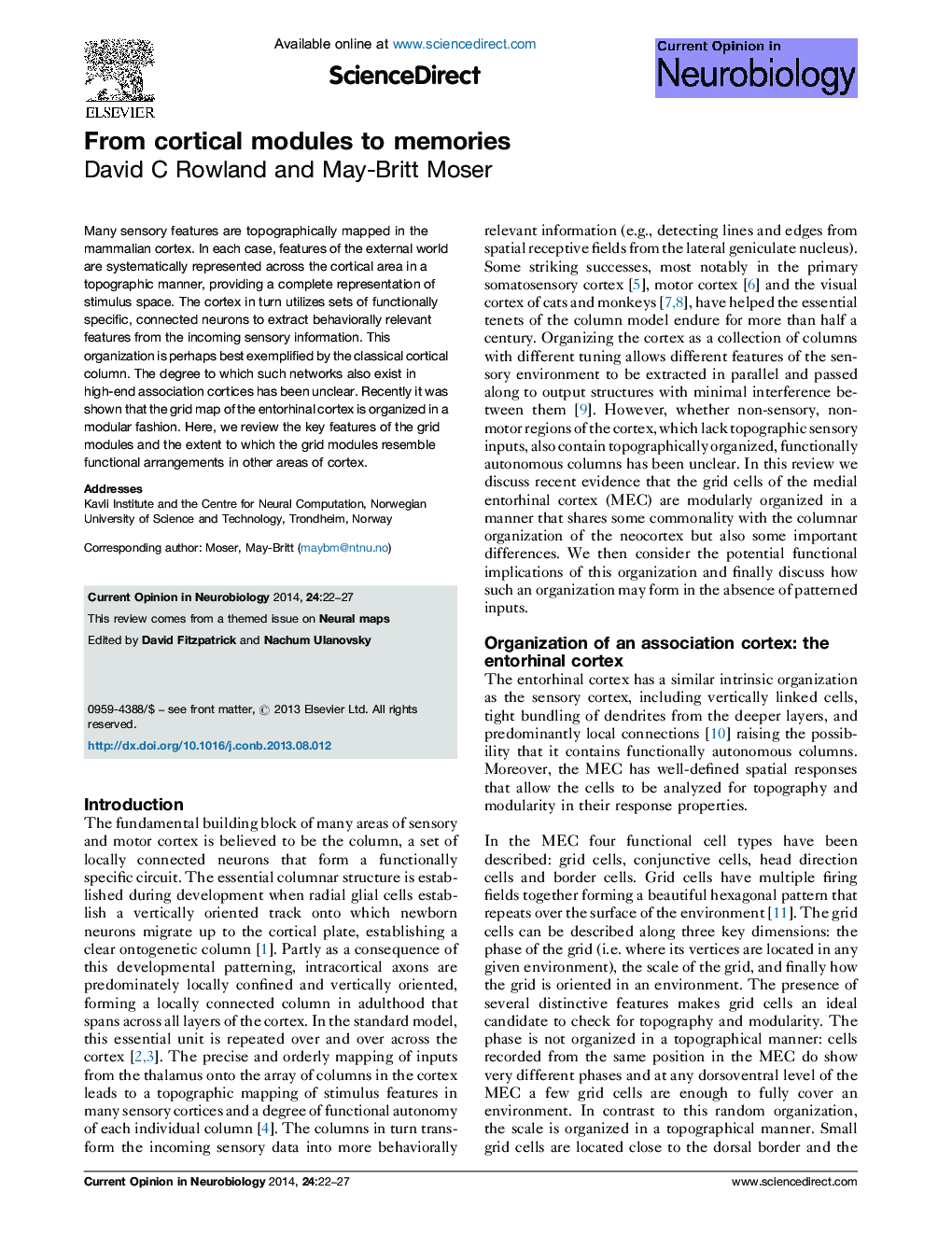| Article ID | Journal | Published Year | Pages | File Type |
|---|---|---|---|---|
| 6266929 | Current Opinion in Neurobiology | 2014 | 6 Pages |
Abstract
Many sensory features are topographically mapped in the mammalian cortex. In each case, features of the external world are systematically represented across the cortical area in a topographic manner, providing a complete representation of stimulus space. The cortex in turn utilizes sets of functionally specific, connected neurons to extract behaviorally relevant features from the incoming sensory information. This organization is perhaps best exemplified by the classical cortical column. The degree to which such networks also exist in high-end association cortices has been unclear. Recently it was shown that the grid map of the entorhinal cortex is organized in a modular fashion. Here, we review the key features of the grid modules and the extent to which the grid modules resemble functional arrangements in other areas of cortex.
Related Topics
Life Sciences
Neuroscience
Neuroscience (General)
Authors
David C Rowland, May-Britt Moser,
